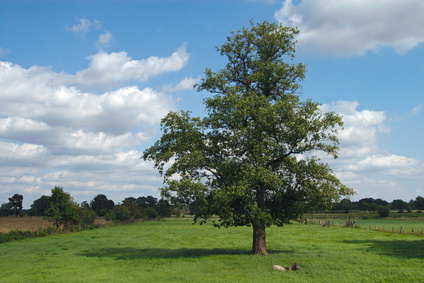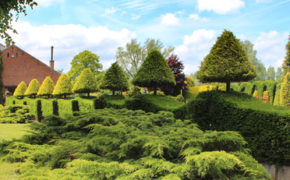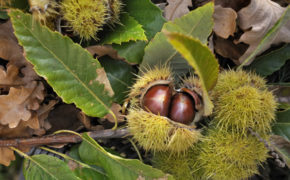
Get a quick no obligation quote It’s free and will only take a jiffy!
When is the Best Time for Elm Tree Pruning?
When is the right time to prune an English elm tree? Why is elm tree pruning essential? And how can Dutch elm disease be controlled? For all the answers, read on…
The English elm is a deciduous broadleaf tree native to eastern and southern Europe. Of the Latin Ulmus minor, the English elm is UK native. In maturity it can reach heights of 30 metres and will live for more than 100 years, providing it does not fall victim to the very widespread Dutch elm disease.
Elm wood is known for its hardiness and water resistance; before metal became widely used, a lot of English towns including Southampton, Reading, Bristol and Exeter utilised elm wood to construct their water mains. It was also commonly used in the manufacture of boats and boat parts, floorboards, weatherboarding, furniture and coffins.
Sadly, the English elm tree has fallen victim to extensive demise since the 1960s having suffered the effects of Dutch elm disease. Whereas once the British countryside was dominated by the elm, you are more likely these days to only see sparse examples in woodland or hedgerows.
Why prune an elm tree?
Dutch elm disease is a fungus which is spread by a flying bark beetle (the elm bark beetle) which bores holes beneath the bark. The fungus finds its way into the tree’s metabolic system, preventing it from drawing in the nutrients it needs.
However, because the beetle only flies at around six metres above the ground, it will only land on elms that have been allowed to grow above this height. Regular pruning, such as crown reduction, is therefore vital if this tree is to survive. Elm trees that are trimmed regularly each year will remain too low for the beetle.
Elm tree pruning is actually considered one of the most important things that can be of help to the tree, providing it is done at the right time of year.
When is the best time for elm tree pruning?
It is crucial to prune an elm tree at very specific times of year. Open wounds attract the elm bark beetle, so be sure to avoid pruning between April and July.
Pruning during autumn is also a no-no. This is because autumn is fungi season, and fungi are the elm tree’s worst enemy.
The best time therefore for elm tree pruning is early spring ahead of the growing season. This timing allows good time for the wounds to close so the tree has plenty of time to rebuild its strength.
Thorough pruning is advisable on a once every three years basis, with minor pruning every year. Added vigilance is crucial in areas where Dutch elm disease is prevalent so that dead or dying branches are removed in a timely fashion so as not to pose a risk.
What to look for when pruning an elm tree
The most important thing to look for is signs of disease or demise. Dutch elm disease symptoms first show themselves in early summer when clusters of leaves start turning yellow and then wilt before turning brown and falling. Shoots that are affected die back from the tip and twigs sometimes turn down, forming a ‘shepherd’s crook’ effect. Dark streaks appear in the outer wood of the twigs beneath the bark, or there may be rings or spots.
A dead or diseased elm tree can pose a threat to other nearby elm trees, so taking swift action is vital. Dead wood is the perfect breeding ground for the elm bark beetle, so dead limbs and trees absolutely must be disposed of via burning without delay.
Tree Preservation Orders
When there is a Tree Preservation Order (TPO) in force, it is prohibited to go ahead with any sort of tree work. Always check whether this is the case before proceeding and, where required, make an application to the local authority for permission. This can take up to eight weeks to come through. Also you should know that if the tree is located in a conservation area, permission must be obtained before undertaking works of any kind.
The importance of elm tree pruning expertise
Because of the threat of Dutch elm disease and the importance of prevention via regular pruning, as well as the correct methods of dealing with diseased branches, it is crucial to engage professional assistance when approaching any form of elm tree pruning.
A qualified tree surgeon with relevant experience will know precisely how to care for your elm tree.
When choosing a tree surgeon, ensure you ask for checkable references and certificates that prove the qualifications advertised. Also be sure to request insurance document so you have total peace of mind that you are covered for the work being undertaken. If possible, try to engage a tree surgeon with Trading Standards and local authority approval.
If you have an elm tree that could do with pruning, or you are concerned about Dutch elm disease, why not get in touch with T.H. Tree Services? As fully qualified and extensively experienced Trading Standards and local authority approved tree surgeons, we can provide specialist expertise across all aspects of elm tree pruning. For a free, no-obligation quotation, contact our friendly experts on 01268 642814 or get in touch here.
I can thoroughly recommend TH Trees. Their professionalism and communication has always been paramount. The jobs undertaken carried out to my satisfaction. Above and beyond.
Thank you Jo for your kind review, it's always a pleasure to be of assistance with your trees.








